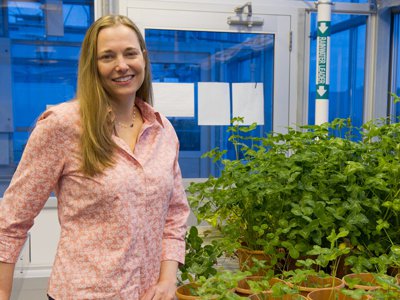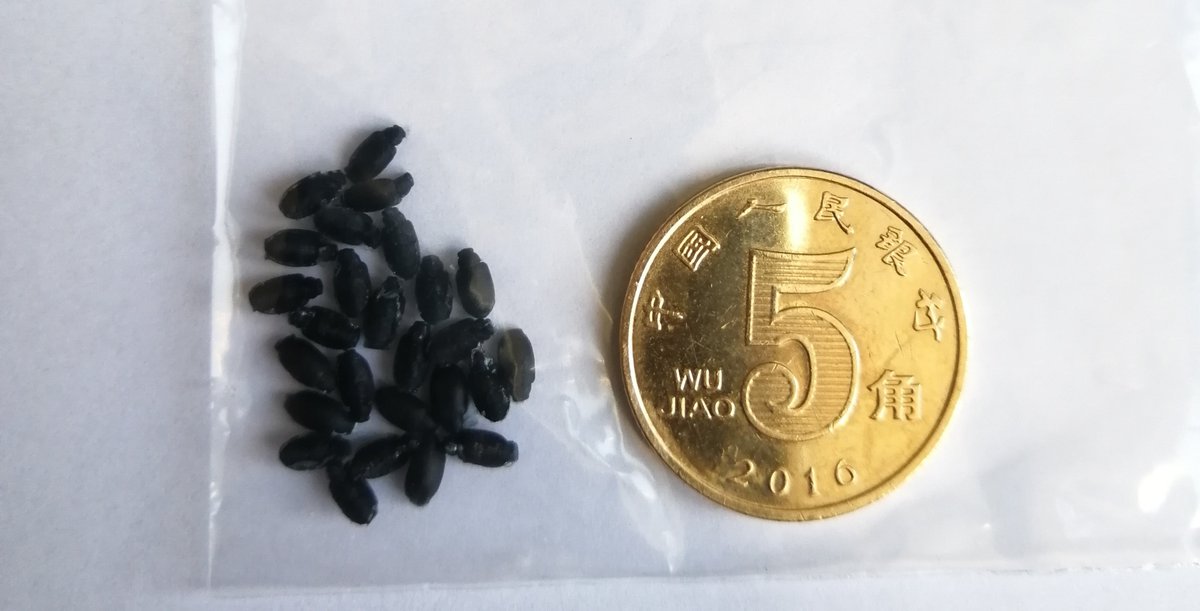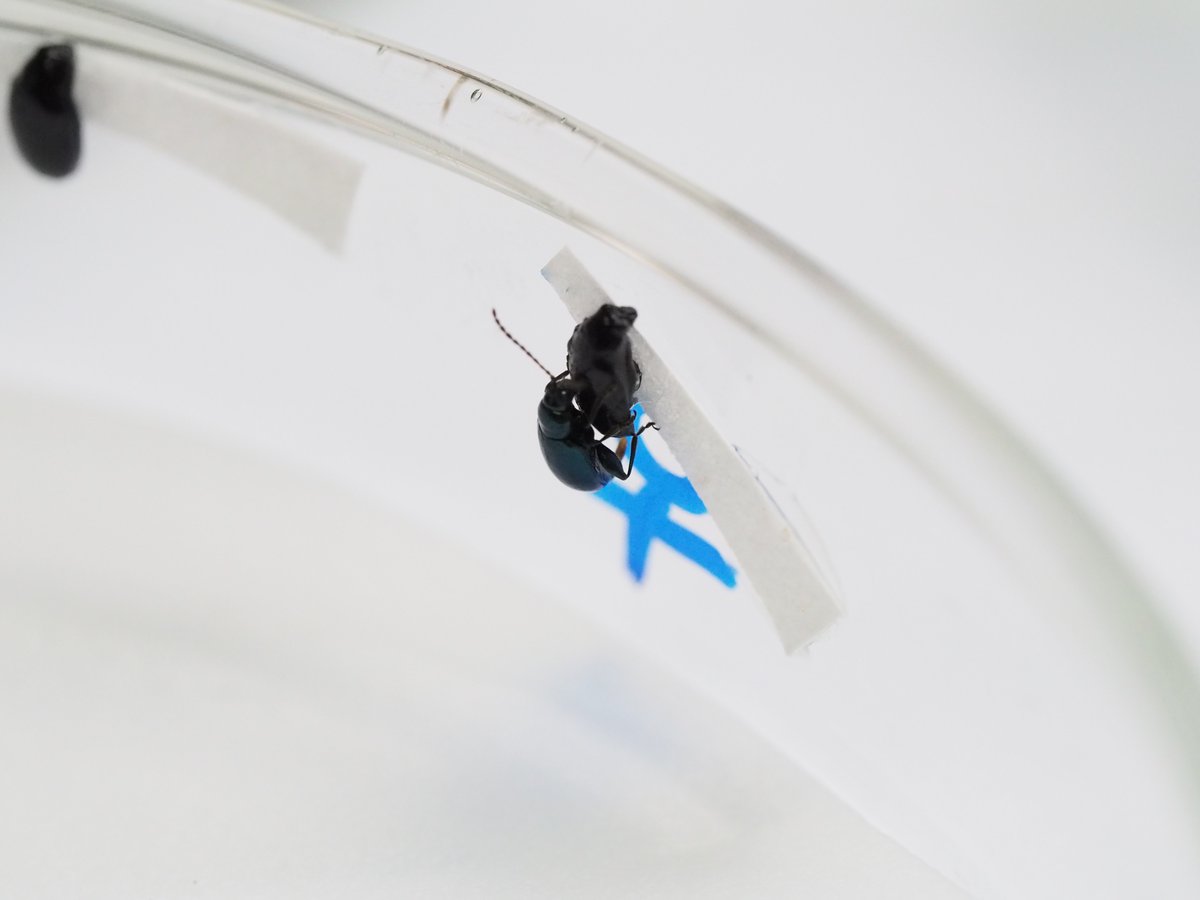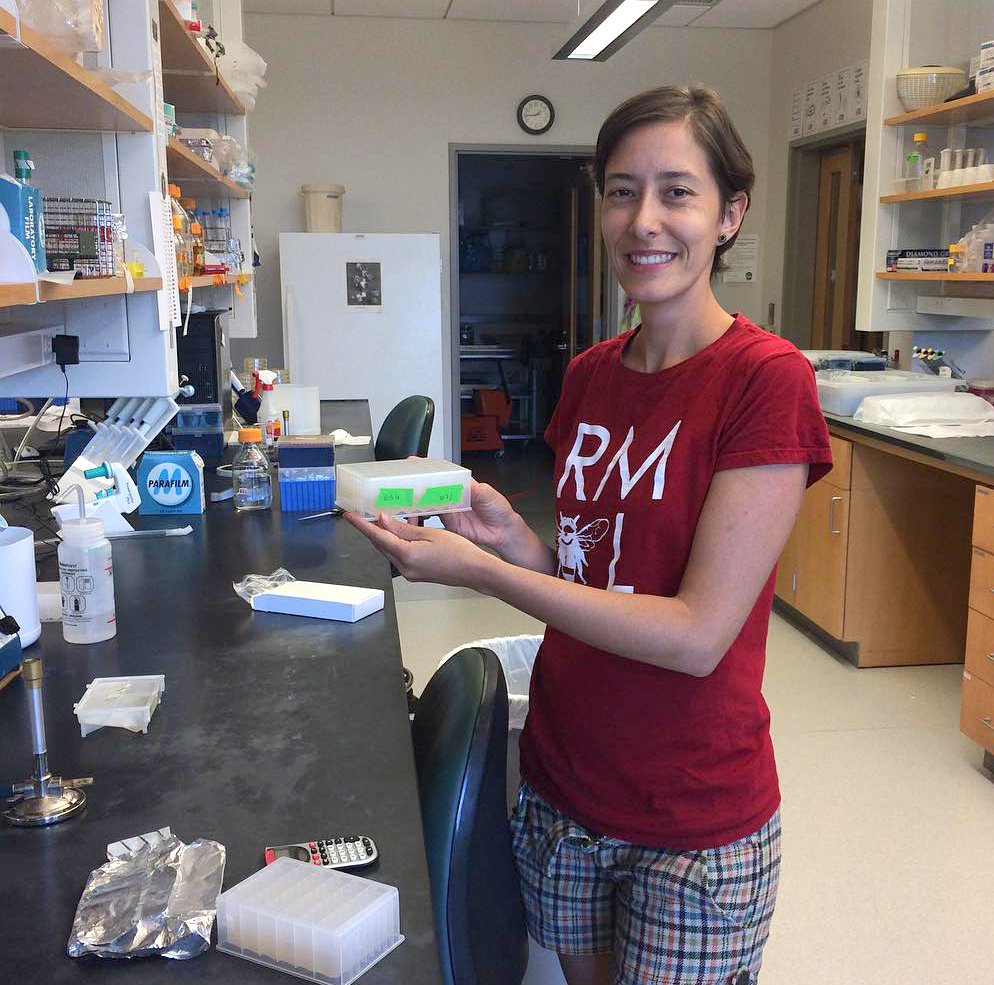Seeking the Answers to Species Diversity
Inside the Segraves Lab, researchers are working to better understand biodiversity, which encompasses the vast variety of plants, animals and organisms that make up the natural world. Under the direction of Kari Segraves, professor of biology in the College of Arts and Sciences, students study species interactions in an effort to answer such questions as: What factors affect species diversity? And what governs the dynamics of species interactions?

Kari Segraves
Segraves recently co-authored two published papers addressing questions critical to uncovering the secrets of how new species form: one in which researchers tested the feasibility of using a 3D-printed beetle model in mating studies, and another where she and her colleagues examined what makes mutualisms – or interactions between species that are mutually beneficial for each species - persist in nature.
Can a 3D-Printed Beetle Model Simulate the Real Thing?
When it comes to choosing a partner, humans tend to be attracted by characteristics like personality and common interests. In contrast, insects tend to be a bit shallow, as they choose a mate based on appearance, and in some cases, smells. One example is the leaf beetle, which produces chemical pheromones that are on their cuticles, or the exterior surface of the beetle. They use these ‘scents’ to assess beetle sex and mating status (whether beetles are sexually mature or not).
Segraves is interested in researching the chemical and visual signals that contribute to mate selection by these beetles. This work is part of a larger project focused on understanding how new species are formed, or speciation. By definition, species undergoing the process of speciation are related organisms that share common characteristics and are capable of interbreeding. Mating studies are essential in determining the mechanisms that might lead to reproductive barriers between newly formed species.
In the past, she and her colleagues have used a variety of models during these studies, including dead females and even round glass beads. To find a new and improved way of studying these insects, Segraves recently collaborated with Huai-Jun Xue and Si-Qin Ge from the Institute of Zoology, Chinese Academy of Sciences, to design, produce and test 3D-printed beetle models to find out if they would be a feasible option when testing mate choice in these and possibly other insects. They believe this novel research to be the first time that 3D-printed beetles have been used in mating tests.

A cluster of 3D-printed beetles next to a 5 Chinese Jiao coin (.8 in.), which is similar in size to the U.S. nickel (.83 in.). (Photo Courtesy: Huai-Jun Xue)
According to Segraves, they designed this study after receiving some unusual results in a mating experiment that focused on the chemical signals used by leaf beetles. In that study, they used dead beetles as mating models and swapped the chemical signals between the sexes so that the male model smelled like a female and the female model smelled like a male. Contrary to what they expected, they found that males did not have a preference for female over male chemical signals. This suggested that the trial itself may have been flawed because they had shown that the beetles always preferred females in another experiment that used chemically unaltered dead beetle models. They were concerned that more chemicals were being released after they had washed the dead models and that this was altering the results.
“We thought it would be a good idea to try using 3D-printed models instead of dead females because the plastic used in 3D printing doesn’t have chemicals that would be confused as mating signals by the beetles,” Segraves says. She and fellow researchers from the Chinese Academy of Sciences conducted the planning and design of the work, and the 3D-printed beetles were produced and tested in Huai-Jun Xue’s lab in China.

Researchers observed male beetles mating with 3D-printed beetles, showing that artificial models offer a feasible and cost-effective method for mating studies of insects. (Photo Courtesy: Yuan Wang)
“In the study, we learned that the 3D models worked and were more effective than models that weren’t shaped like the beetles such as glass beads,” Segraves notes. Another interesting result revealed that males use color in mate selection as males tested on black versus white 3D models all chose the black models.
In the end, the researchers determined that when given an option, the beetles opt for the real thing over the 3D counterpart. When males were offered dead females with the reapplied chemical signals, males preferred dead females over black 3D models coated with the female scent. But Segraves says that’s to be expected given that there are probably other types of signals that can’t be replicated by 3D printing such as tactile signals.
While dead females are most realistic, the 3D-printed beetles provide scientists with a lifelike model where they can more tightly control the chemicals that are present in a given experiment. Their results indicate that in the absence of a dead female beetle, 3D-printed models can provide a feasible and cost-effective method for mating studies of insects, furthering the study of species development.
Their full study, 3D-printed insect models offer a feasible method for mating studies of chrysomelid beetles, appeared in the journal Chemoecology.
Cheaters Don’t Always Win
To continue the human metaphor, the sign of a healthy personal relationship is one that is equally mutual – where you get out just as much as you put in. Nature has its own version of a healthy relationship. Known as mutualisms, they are interactions between species that are mutually beneficial for each species.

A bee collecting nectar and in turn pollinating a flower is an example of one of nature's mutualisms – an interaction that is mutually beneficial for each species.
One example is the interaction between plants and pollinators, where your apple trees are pollinated and the honeybee gets nectar as a food reward. But what makes these mutualisms persist in nature? If rewards like nectar are offered freely, does this make mutualisms more susceptible to other organisms that take those rewards without providing a service in return?
A team of A&S researchers, including co-principal investigators Kari Segraves and associate professor of biology David Althoff, along with postdoctoral researcher Mayra Vidal, former research assistant professor David Rivers, and Sheng Wang ’20 Ph.D., looked into those questions and their results were published in the prestigious journal Science.
They investigated the abilities of simple versus diverse communities of mutualists, comparing how each deal with cheaters. Cheaters are species that steal the benefits of the mutualism without providing anything in return. An example of one of nature’s cheaters are nectar robbers. Nectar-robbing bees chew through the side of flowers to feed on nectar without coming into contact with the flower parts that would result in pollination.
The research team wanted to test if having multiple mutualists with similar roles allows the community as a whole to persist when cheaters take away the mutualists’ resources. The idea was to examine whether having more species involved in a mutualism, such as many pollinator species interacting with many different plant species, made the mutualism less susceptible to the negative effects of cheaters. They also wanted to test whether increasing the number of mutualist species allowed all the mutualists to persist or if competition would whittle down the number of mutualists species over time. In essence, the team wanted to understand the forces governing large networks of mutualists that occur in nature.

Postdoctoral researcher Mayra Vidal with a tray containing a harvested community of yeast.
A&S researchers tested their ideas by producing mutualisms in the lab using yeast strains that function as mutualistic species. Segraves and Rivers genetically engineered these strains to trade essential food resources. Each strain produced a food resource to exchange with a mutualist partner. They engineered four species of each type of mutualist as well as two cheater strains that were unable to make food resources.
The researchers assembled communities of yeast that differed both in the number of species and the presence of cheaters. They found that communities with higher numbers of mutualist species were better able to withstand the negative effects of cheaters because there were multiple species of mutualists performing the same task. If one species was lost from the community due to competing with a cheater, there were other species around to perform the task, showing that the presence of more species in a community can lessen the negative effects of cheaters.
“It’s similar to thinking about a plant that has many pollinator species,” says Segraves. “If one pollinator species is lost, there are other pollinator species around to pollinate. If a plant only has one species of pollinator that goes extinct, the mutualism breaks down and might cause extinction of the plant.”
Their results highlight the importance of having multiple mutualist species that provide similar resources or services, essentially creating a backup in case one species goes extinct. Segraves compares this phenomenon to the relationship between retailers and consumers. Communities typically have multiple banks, grocery stores, restaurants and hospitals to ensure that there are always goods and services available should something happen to one company or facility.
Segraves says future research will explore the possibility of a mutualist species becoming a cheater. The group is testing if mutualists that perform the same function might set up an environment that allows one of those mutualist species to become a cheater since there are other mutualists around that can fill that role. They predict that the mutualist species that is experiencing the most competition from the other mutualists will be the species that switches to cheating. They also hope to determine how the mutualists and cheaters evolved over time to provide a deeper understanding of the actual changes that led to differing outcomes in the communities.
The team’s research was funded by a $710,000, three-year grant from the National Science Foundation.

